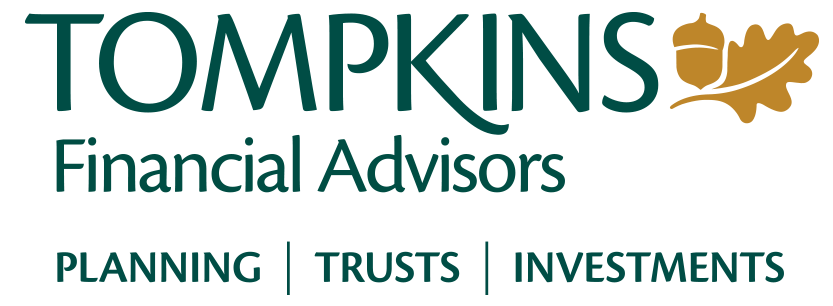

Uncertainty Rules
The first half of the year was a tale of two quarters. Following a solid 2024, sentiment shifted during the first quarter of 2025 from early optimism to growing uncertainty. This was largely due to the unpredictability of the new administration’s trade policies, which clouded the economic outlook and dampened investor confidence. US gross domestic product (GDP) declined, companies delayed CapEx and/or did not issue forward guidance and hiring slowed. Big US tech companies, the market darlings for several years, lagged significantly, giving way to the traditional value and international sectors of diversified portfolios.
The second quarter saw a notable rally in investment markets as early trade tensions eased and a 90-day de-escalation period temporarily paused heightened tariffs, especially against China. Though uncertainty remained, the reprieve gave investors a chance to re-enter the market, where riskier assets like tech/IT were less expensive after their first quarter’s pullback Corporate earnings proved to be robust, with downgrades plateauing and recession talk subsiding. The consumer remained resilient, again. Inflation, while still above the Federal Reserve’s 2.0% target, saw the Consumer Price Index (CPI) and Personal Consumption Expenditures (PCE) price index gradually decrease, easing earlier concerns. The Fed maintained a “watch and see” approach on interest rates, but this implied stability calmed fears of more aggressive tightening and improved the probability of future rate cuts. A depreciating US dollar boosted international returns as it made their goods more competitive. Many countries, not just the US, continued to realize the importance of becoming more economically self-sufficient, strengthening internal policies and providing more fiscal stimulus for infrastructure and business spending.
The following heatmap clearly shows the market sector shifts from the full-year 2024 to 1st Quarter 2025, and then from 1st Qtr 2025 to 2nd Qtr 2025:

As we reach the halfway point of 2025, the market fluctuations and economic commotions around the globe since the
beginning of the year have been staggering. We’re seeing the structure of the world economic order in place since the end
of World War II being tested in real time. America’s exceptionalism (and dominance) is being challenged by China, India,
Brazil and other regional powers. Long-held trade agreements, complex supply chains and other geopolitical alignments are
just some examples of key elements that are shapeshifting. It took years to build the post-WWII order, and it will probably
take years before any restructuring stabilizes. In the meantime, the volatility and lack of clarity are affecting the investment
decisions of investors and company managements alike.
This year’s market volatility and indecisiveness owe a lot to tariff-induced trade wars and actual wars fought across the globe. Knowing what to invest in, over what timeframe to invest and what potential return outcomes to project are decisions that have become more difficult to determine. This likely had a lot to do with the first quarter’s correction, a run up in bond yields and the decline in the value of the US dollar. To be fair, 2025 started with relatively high US equity valuations, and the odds of a normal market correction were already high without the added tariff pressures. The news was not, however, completely dismal as solid corporate earnings reports, a resilient consumer, continued AI momentum and temporary tariff relief proclamations were positive signs. Portfolio diversification also paid off handsomely in the first half of the year, balancing the market’s volatility with value and international sectors performing well in the first quarter and the tech/IT areas surging in the second quarter. All in all, market stability seesawed from discouraging to encouraging as the second quarter ended.
Nevertheless, market volatility is not likely to subside anytime soon. Trade policy uncertainty remains a constant, if
not muted, noise in the economic background, as tariffs appear to be negotiating tools for the administration. Market
dislocations do, however, present investment opportunities when markets overreact during these volatile periods and punish strong companies along with the weak ones. The key when great companies go on sale is to have dry powder available to invest while also being prepared to weather anxiety in the meantime. Not all companies are ripe for powerful growth and TFA’s rigorous and fundamental research is crucial to making solid security selection. As the chart below conclusively shows, markets have historically digested uncertainty rather quickly and rebounded fairly emphatically:

*Source: FactSet, Standard & Poors, J.P. Morgan Asset Management. Average annual return 10.6% over 1980-2024 timeframe.
Where do we go from here? We continue to find the backdrop for economic growth constructive as investors flip calendars
to the second half of 2025. The market’s strong 2Q rebound was due, in large part, to US consumer resilience and corporate
earnings growth durability. Higher bond yields have also contributed to cash balance profit growth for many companies and investors. Conversely, the low interest debt secured by quality borrowers before the recent rate hiking cycle has reduced debt service expense, benefiting current balance sheets and future corporate earnings projections. Any anticipation of Fed rate cuts that’s priced into the market provides a supportive backdrop for riskier assets (i.e. stocks, high yield bonds, etc.) going forward. Holding quality issues and maintaining global diversification have proven, and should continue to prove, to be a benefit to portfolios.
Key Takeaways:
- While a lack of clarity over US trade policy has been a principal driver of market volatility through the first six months of 2025, the markets have managed to take it all in stride.
- Despite many US investors and companies pausing further investments or capital expenditures (CapEx) amidst the threat of continued economic disorder, the recent market recovery suggests a positive, albeit slower, upward trend going forward.
- A weak dollar helped the international markets trade more favorably and the tech/AI trade, which endured a dismal first quarter, stormed back in the second quarter.
- Geographic and sector diversification should be structural advantages to portfolios as the growing momentum of the global economies challenging US dominance work to encourage everyone to compete more effectively.
- Inflation and price pressures are subsiding, somewhat, and represent calmer conditions over beginning of the year expectations.

